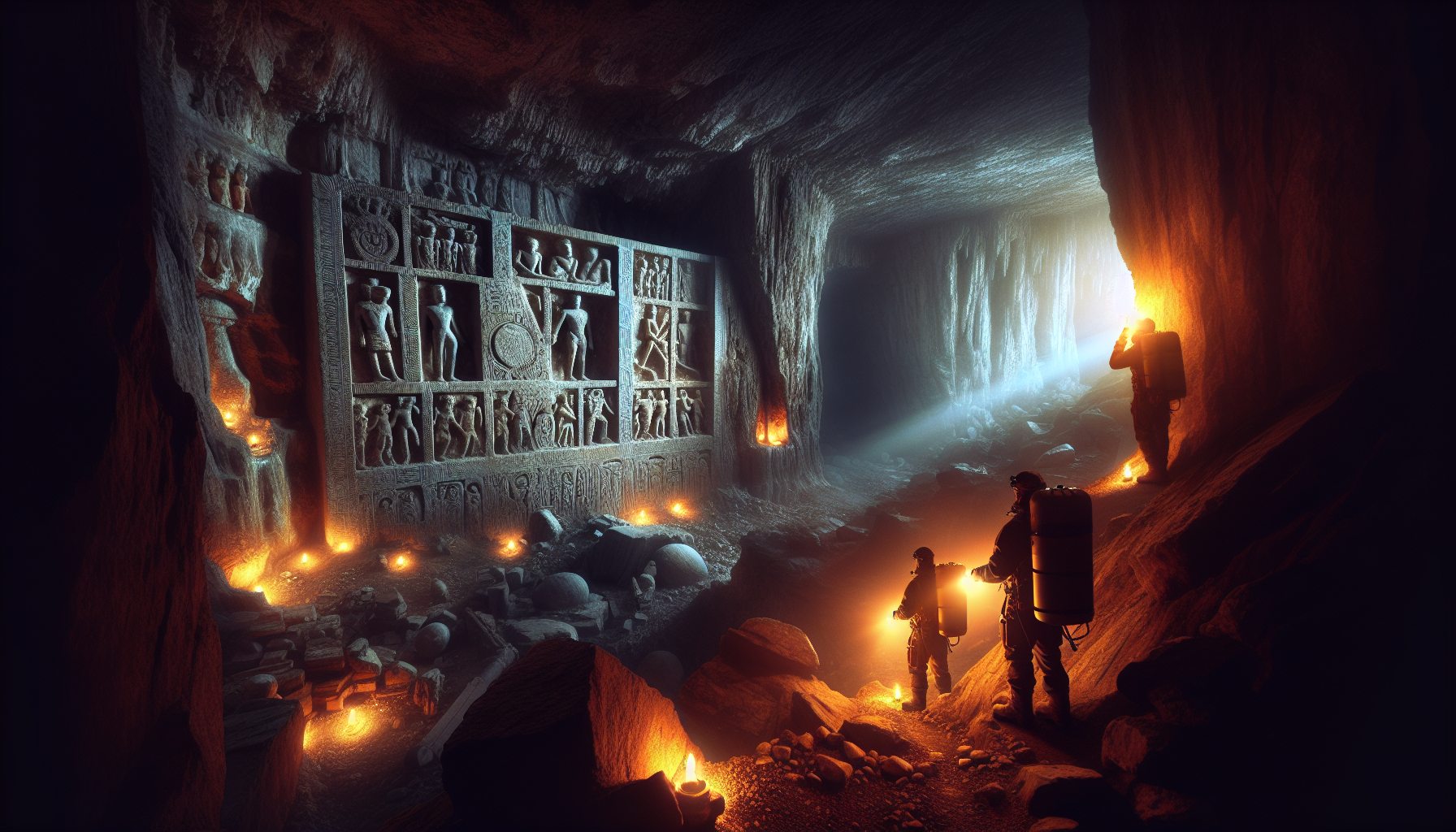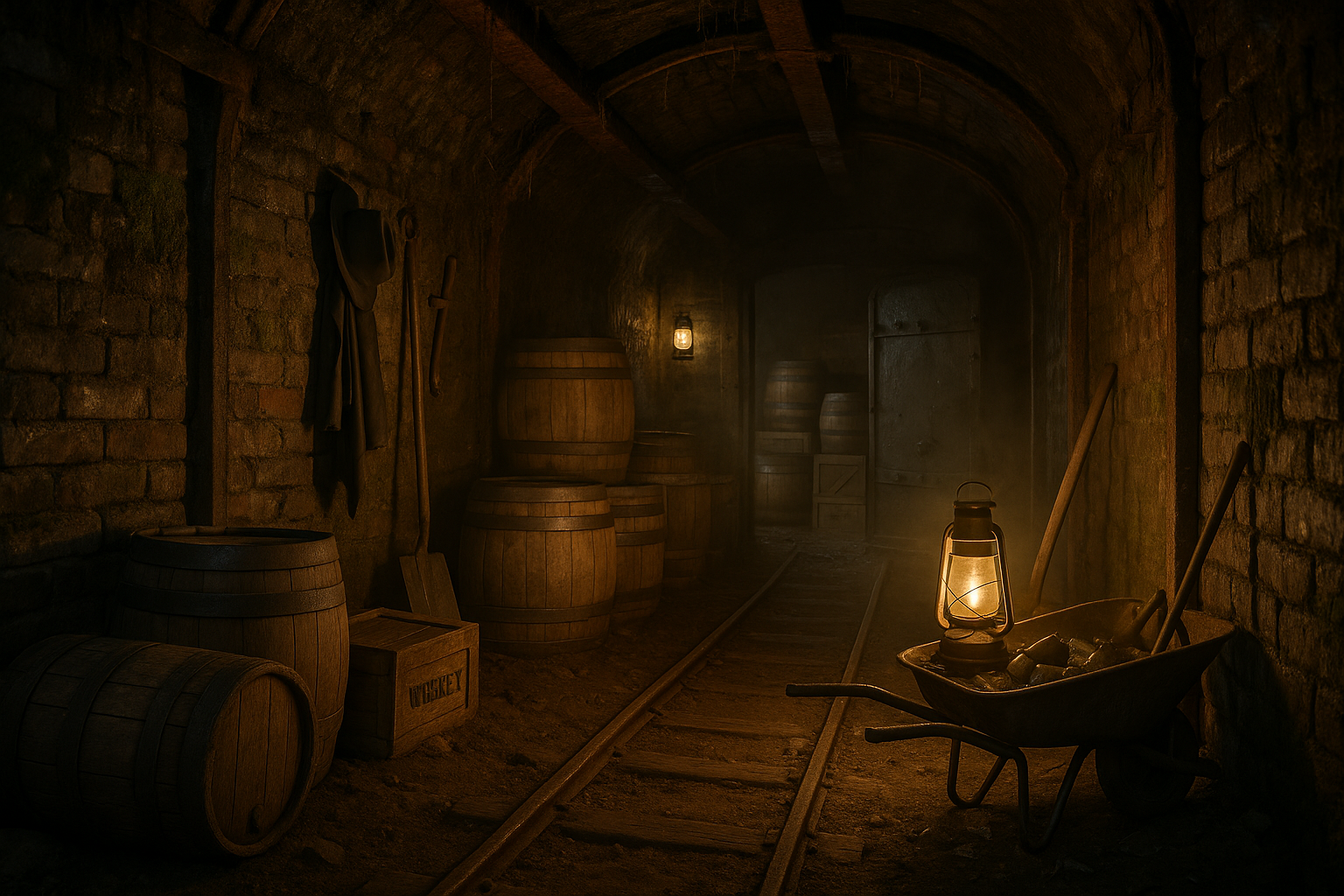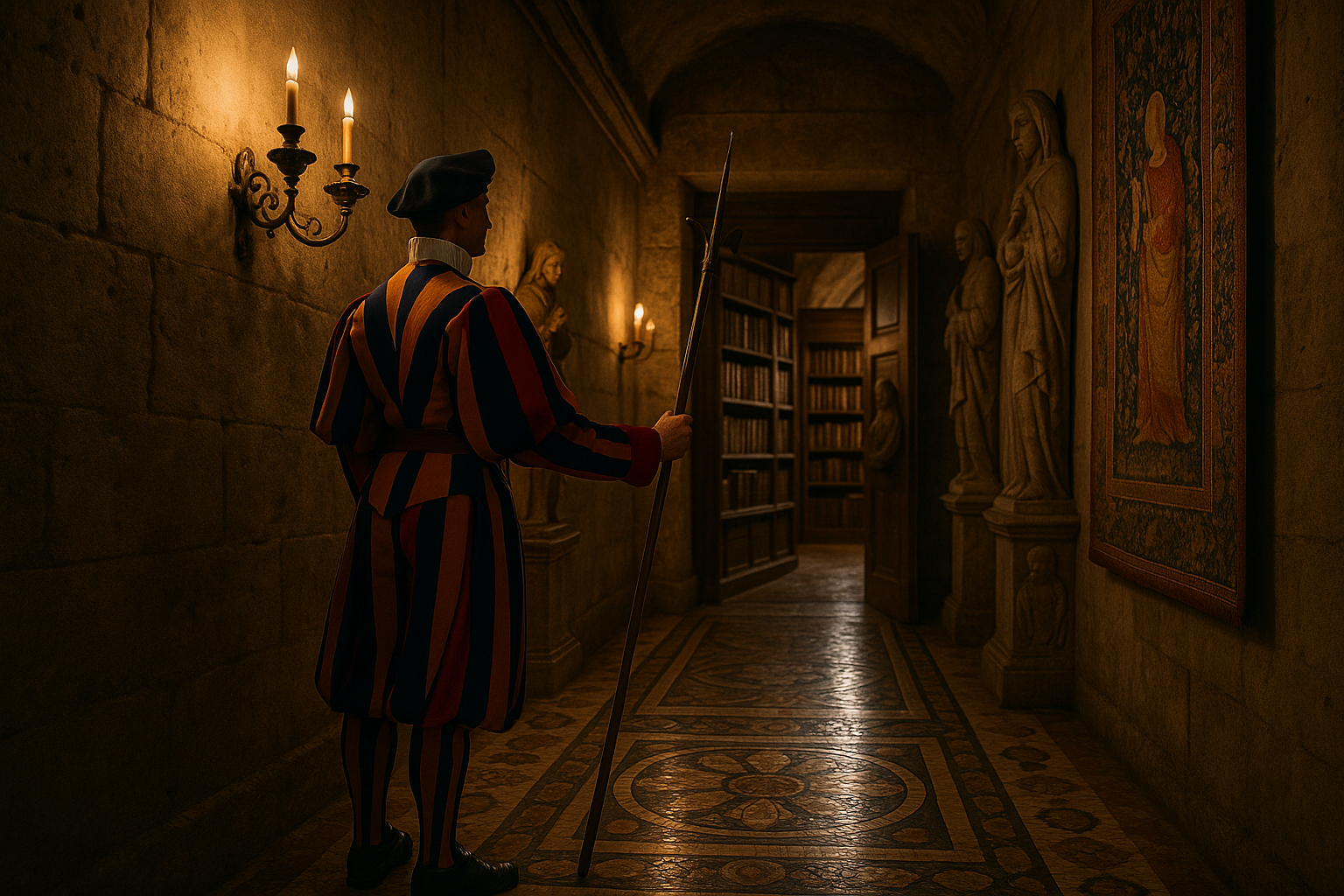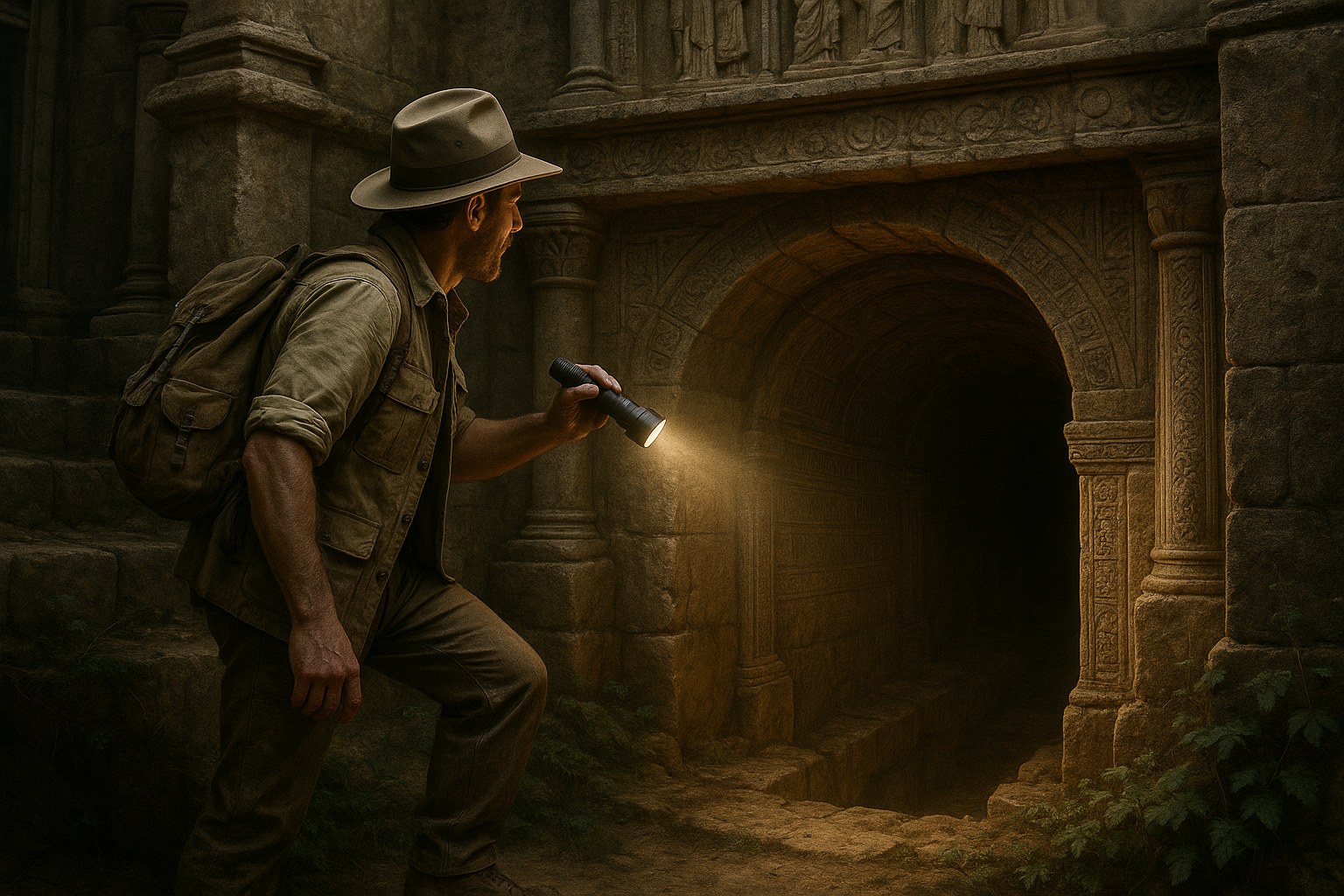Beneath the familiar terrain of our world lies a mysterious realm, shrouded in darkness and history that many have never dared to explore. This hidden world, lying just beneath our feet, holds the secrets of ancient civilizations and untold stories of human ingenuity and survival. Imagine, for a moment, stepping into a realm where time stands still, where the echoes of ancient voices whisper through subterranean corridors, and where the ground itself tells tales of civilizations long forgotten. This is not the stuff of fantasy or fiction, but the fascinating reality of subterranean civilizations that have existed throughout human history. As we embark on this journey, we invite you to delve into the depths of the earth to uncover the hidden chapters of our past, to understand how these underground societies thrived, and to learn what they reveal about human resilience and adaptability.
From the enigmatic catacombs of Paris to the intricate underground cities of Cappadocia, subterranean spaces have long fascinated archaeologists, historians, and adventurers alike. These hidden worlds offer a unique glimpse into the lives of those who chose, or were forced, to dwell beneath the surface. But why did these people build their lives underground? What drove them to dig into the earth, creating intricate networks of tunnels and chambers? The answers to these questions are as varied as the civilizations themselves. In some cases, it was a matter of survival, a necessity driven by war, climate, or persecution. In others, it was the allure of protection, secrecy, and the promise of a hidden sanctuary. As we explore these underground worlds, we will uncover the technologies and architectural marvels that made such subterranean living possible, and reveal the cultural and social dynamics that thrived in these shadowy realms.
Throughout this article, we will journey to some of the most remarkable subterranean civilizations known to history. We will examine the incredible engineering feats that made cities like Derinkuyu and Naours possible, delve into the spiritual and ritualistic significance of underground temples and burial sites, and explore the modern rediscoveries of these ancient worlds. In doing so, we will not only bring to light the stories of those who lived below ground, but also reflect on what these civilizations can teach us about adaptation, innovation, and the enduring human spirit. So, prepare to embark on an adventure that transcends time and space, as we unearth the secrets of subterranean civilizations and discover the hidden depths of history below ground. 🌍⛏️
The Allure of Subterranean Civilizations
Throughout history, the notion of hidden worlds beneath our feet has fascinated scholars, explorers, and dreamers alike. Whether rooted in myth or historical fact, these subterranean civilizations promise secrets and treasures waiting to be unearthed. This article delves into the mystery of these underground worlds, inviting you to explore the depths of history and the whispers of civilizations long forgotten.
Our fascination with subterranean worlds is not a modern phenomenon. Ancient myths and legends from cultures across the globe hint at vast networks of tunnels and cities lying beneath the earth. From the catacombs of Rome to the intricate cave systems of Cappadocia in Turkey, humans have long been drawn to the idea of life below the surface. These tales often serve as allegories for life’s deeper mysteries, symbolizing the unknown and unexplored aspects of human existence.
But what drives our curiosity about these hidden realms? For some, it’s the promise of adventure and discovery. For others, it’s a chance to challenge our understanding of history and the world as we know it. As you read on, you’ll discover how these underground worlds were formed, their historical significance, and what they reveal about human ingenuity and resilience. Get ready to uncover the hidden depths of history below ground.
The Historical Context of Subterranean Habitats
Subterranean civilizations are not merely figments of the imagination; they have played a critical role in human history. These underground cities and habitats were often born out of necessity. During times of war or environmental stress, people sought refuge below ground, leveraging the earth’s natural insulation and protection. These structures were also used for religious purposes, serving as sites for rituals and worship away from prying eyes.
One of the most famous examples is the city of Derinkuyu in Turkey. This ancient, multi-level city was designed to house thousands of people, complete with ventilation shafts, wells, and even livestock pens. The architectural ingenuity of Derinkuyu and other similar sites demonstrates the adaptability and resourcefulness of ancient peoples in the face of adversity. To explore this further, watch this fascinating video: The Mystery of Derinkuyu Underground City by History Channel.
These subterranean environments also reflect the socio-political dynamics of their time. By analyzing the construction methods, artifacts, and spatial organization of these underground spaces, historians and archaeologists can glean valuable insights into the cultures that built them. Subterranean cities are microcosms of the societies they served, offering a unique perspective on the past.
Comparing Subterranean Cities Across Cultures
To understand the diversity and complexity of subterranean civilizations, it’s essential to compare them across different cultures and eras. The following table outlines some of the most notable underground cities and their distinguishing features:
| City | Location | Era | Unique Features |
|---|---|---|---|
| Derinkuyu | Turkey | 8th Century BCE | Multi-level city with ventilation shafts and wells |
| Coober Pedy | Australia | 20th Century | Homes built into hillsides for temperature regulation |
| Naours | France | Medieval Period | Extensive network of tunnels and chambers used as refuge |
As you can see, each subterranean city possesses unique characteristics shaped by its cultural and environmental context. For instance, Coober Pedy in Australia is known for its “dugouts” — homes built into hillsides to escape the extreme desert heat. In contrast, the city of Naours in France features an extensive network of tunnels used as a refuge during times of conflict. These differences highlight the adaptability of human ingenuity in the face of diverse challenges.
By comparing these underground cities, we gain a deeper appreciation for the innovative spirit that has driven human progress throughout history. These subterranean spaces are more than mere shelters; they are testaments to the resilience and creativity of the human spirit.
Technological Innovations in Subterranean Architecture
One of the most fascinating aspects of subterranean civilizations is the technological innovations that made them possible. These ancient architects faced numerous challenges, from ensuring adequate ventilation to managing waste and water supply. The solutions they devised were often ahead of their time, showcasing remarkable engineering skills and resourcefulness.
Ventilation was a critical concern for subterranean habitats, as stagnant air could pose significant health risks. Many ancient cities, such as Derinkuyu, featured complex systems of ventilation shafts and chimneys that circulated fresh air throughout the underground spaces. These systems were carefully designed to take advantage of natural airflow patterns, ensuring that residents had access to clean air at all times.
Water management was another crucial consideration. In many cases, subterranean cities were equipped with intricate networks of wells, cisterns, and aqueducts to provide a reliable water supply. These systems often relied on gravity and natural water sources, demonstrating a keen understanding of hydrology and engineering principles. Additionally, waste disposal was managed through carefully designed drainage systems that minimized contamination and maintained sanitary conditions.
The Role of Subterranean Civilizations in Modern Society
While ancient subterranean civilizations offer valuable insights into the past, their relevance extends to modern society as well. As urban populations continue to grow and environmental challenges become more pressing, the concept of living below ground is gaining renewed interest. Modern architects and city planners are exploring the potential of subterranean spaces to address issues such as urban overcrowding, energy efficiency, and climate resilience.
For instance, underground construction can provide a sustainable solution for expanding urban areas without encroaching on valuable surface land. Subterranean spaces offer natural insulation, reducing energy consumption for heating and cooling. Additionally, these spaces can be designed to withstand extreme weather events, providing safe and resilient living environments in the face of climate change.
- Subterranean civilizations provide valuable insights into human history and innovation.
- These underground cities offer lessons for modern urban planning and sustainability.
- The exploration of subterranean spaces continues to inspire curiosity and adventure.
Whether you’re a history enthusiast, a city planner, or simply someone with a curious mind, the secrets of subterranean civilizations offer endless possibilities for discovery and exploration. Dive deeper into the world beneath your feet and uncover the hidden depths of history waiting to be revealed.

Conclusion
Certainly! Here is a detailed conclusion for your article:
—
In conclusion, the exploration of subterranean civilizations provides a fascinating window into the hidden depths of human history, inviting us to reconsider the narratives that shape our understanding of past societies. Throughout this article, we’ve delved into various intriguing aspects of underground settlements, from their architectural ingenuity to their cultural and historical significance. By uncovering these buried secrets, we not only gain insight into the resourcefulness and adaptability of ancient peoples but also enrich our own contemporary perspectives on community, survival, and innovation.
One of the key takeaways from our journey through the depths of history is the remarkable ability of these civilizations to thrive under challenging conditions. Whether motivated by environmental factors, defense strategies, or religious beliefs, these communities demonstrate an impressive capacity for resilience and creativity. The underground cities of Cappadocia, for instance, exemplify how humans can adapt to their surroundings to ensure survival and security. Similarly, the subterranean networks in China and the Americas reveal the diverse motivations and strategies employed by different cultures to utilize the underground space effectively.
Moreover, the study of subterranean civilizations challenges us to think critically about the limitations and possibilities of traditional archaeology. As technology advances, so does our ability to discover and analyze these hidden worlds with greater precision and sensitivity. Ground-penetrating radar, 3D modeling, and other cutting-edge tools are revolutionizing the field, allowing us to unearth treasures that were previously inaccessible. These technological advancements not only enhance our understanding of ancient societies but also highlight the importance of interdisciplinary collaboration in unraveling the mysteries of the past.
The importance of this topic extends beyond historical curiosity. As modern societies grapple with issues of urbanization, sustainability, and climate change, there is much to learn from the innovative approaches of our ancestors. Underground living, for example, presents intriguing possibilities for energy efficiency, space conservation, and environmental harmony. By studying how ancient civilizations managed their resources and adapted to their environments, we can glean valuable insights that may inform future urban planning and sustainable development initiatives.
Furthermore, the exploration of subterranean civilizations serves as a powerful reminder of the interconnectedness of human history. The stories etched into the walls of underground cities and the artifacts buried beneath our feet connect us to a shared past that transcends geographical and temporal boundaries. This sense of connection fosters a deeper appreciation for the diverse cultural heritage that shapes our world today and inspires us to preserve these invaluable legacies for future generations.
As we conclude this exploration, it is essential to recognize the significance of continued research and engagement with the subject. Scholars, archaeologists, and enthusiasts alike are encouraged to contribute to this ever-evolving field by conducting research, sharing findings, and engaging in dialogue about the implications of these discoveries. The more we uncover, the richer our collective understanding of human history becomes.
We invite you, our readers, to reflect on the insights gained from this exploration and consider how they might influence your perspective on history, innovation, and sustainability. Whether you are inspired to delve deeper into the study of subterranean civilizations or simply share this newfound knowledge with others, your engagement is crucial in keeping the dialogue alive.
In sharing this article, you play a vital role in expanding the conversation and encouraging others to join the exploration of history’s hidden depths. We encourage you to leave comments, share your thoughts and questions, and engage with fellow readers who are equally captivated by the secrets of subterranean civilizations. Your participation not only enriches the discussion but also ensures that these stories continue to inspire curiosity and wonder for generations to come.
To continue your journey into the depths of history, explore further through reputable resources such as National Geographic and Smithsonian Magazine, where you can find additional insights and discoveries related to underground civilizations.
In closing, let us carry forward the lessons of resilience, innovation, and interconnectedness exemplified by these remarkable societies. As we stand on the threshold of the past and the future, may we be inspired to apply these lessons in our own lives and contribute to a world that values history, embraces innovation, and cherishes the rich tapestry of human experience. 🌍✨
—
Toni Santos is a visual storyteller and artisan whose work explores the quiet power of what lies beneath. With a deep fascination for subterranean and hidden architecture, Toni uncovers the layers, voids, and forgotten spaces that shape our built environment from the shadows.
His art is a journey through the unseen — from ancient underground chambers to sealed passageways, service tunnels, and foundations buried in time. Each creation tells a story of silence, secrecy, and structure — revealing how absence and concealment can be just as meaningful as what’s visible above ground.
Whether working through visual compositions, architectural studies, or symbolic handcrafted pieces, Toni captures the soul of hidden spaces. His work bridges art and archaeology, blending design with discovery. Trained in visual design and traditional techniques, Toni creates with intention. His pieces don’t just depict — they interpret, inviting viewers to rethink what space, memory, and architecture mean when they’re hidden from view.
As the creative force behind Vizevex, Toni shares this perspective through curated visual narratives, symbolic collections, and interpretive essays that give voice to the quiet geometries beneath our feet.
His work is a tribute to:
The mystery of spaces built to be forgotten
The symbolism embedded in foundations, voids, and passageways
The timeless connection between human intention and hidden structure
Whether you’re an artist, an urban explorer, or someone fascinated by the unseen frameworks that support our world, Toni invites you into a realm where architecture becomes myth — one corridor, one layer, one buried story at a time.





